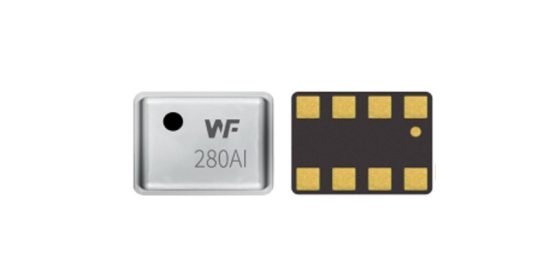Կատալոգ
Altitude pressure sensors (MEMS barometers) give drones steady, low-power height data and are a key input for flight control and navigation. This piece looks at height measurement, flight control response, sensor fusion, safety alerts and application scenarios, using the pictured sensor as a reference.
1. Precise height measurement and flight control
Altitude is inferred from the way air pressure drops with height. MEMS barometers output pressure in real time with millisecond-level response and convert that to height; used with GPS this can reach about ±1 metre. During climbs or descents the sensor feed drives motor power and PID control to keep hover stable and transitions smooth.
The barometer turns ambient pressure into a height signal the flight controller understands. Its output reflects height changes quickly so the controller can tweak motor commands and attitude loops. With filtering and Kalman fusion you can suppress single-point noise and temperature drift, keeping altitude steady even when GPS accuracy slips.

2. Route planning and navigation enhancement
In a multi-sensor setup, barometric data fused with GPS and the IMU corrects height errors and keeps 3D positioning reliable in urban canyons or weak-GPS conditions. Pressure changes also add a useful dimension for terrain adaptation and dynamic obstacle avoidance.
Combining baro height with GNSS and inertial data cuts the risk of wrong decisions from any single source. Baro is especially valuable for short-term height hold: when GNSS jumps or drops out, pressure provides continuous height estimates so the route controller can manage smooth climbs or descents. In complex terrain, pressure trends can hint at slope changes and help the path planner fine-tune routes.
3. Flight safety and protection
Barometers aren’t only for routine height estimates — they can trigger thresholds for abnormal pressure shifts (like sudden gusts or sensor failure) and command emergency hover, return or landing. At high altitude or in extreme conditions you must calibrate pressure outputs to avoid unexpected motor or battery loads.
By tracking pressure and its rate of change, the flight controller can kick in protective measures right away. Over- or under-pressure alerts link to the controller to reduce thrust or initiate return-to-home. For high-altitude missions, compensate for pressure-to-density relations so power estimates stay accurate and performance remains predictable.
4. Real-world use cases
Precise height control improves outcomes across crop spraying, firefighting inspection, aerial mapping and environmental monitoring: agriculture needs a few metres’ accuracy for even spray coverage; firefighting requires stable hover amid smoke and updrafts for imaging; mapping needs constant height for consistent image resolution.
Different missions demand different altitude precision and response speed. Crop spraying needs stable low flight, typically 2–3 metres; mapping and aerial photography require a steady height for image consistency; rescue and firefighting require quick response to avoid height disturbances from thermal updrafts and smoke. Sensor outputs tied to cameras or sprayers improve mission consistency and safety.
5. Technical strengths and challenges
MEMS barometers are compact, low-power and sensitive with millisecond response — ideal for drone integration. Temperature, humidity and airflow can still skew readings, so you need temperature compensation, sensor fusion and periodic calibration to keep long-term reliability.
MEMS gives size and power advantages while keeping high sensitivity and fast response. Good engineering includes a temperature sensor for compensation, software filtering to cut noise, and scheduled calibration to prevent drift. For specialised tasks, choose higher resolution or faster-sampling models to meet ±0.5 hPa or tighter accuracy needs.
Եզրափակում
Altitude pressure sensors are an indispensable height-sensing module in drone systems. Fused with GNSS and the IMU and backed by proper temperature compensation and algorithms, they boost positioning and flight stability and provide reliable data for many mission types. Engineers should balance accuracy, response time and environmental robustness when selecting sensors so the whole platform stays steady and safe under varied conditions.
Վերոնշյալ ներածությունը միայն քերծում է ճնշման սենսորային տեխնոլոգիայի կիրառությունների մակերեսը: Մենք կշարունակենք ուսումնասիրել տարբեր արտադրատեսակներում օգտագործվող սենսորային տարրերի տարբեր տեսակները, ինչպես են դրանք աշխատում, ինչպես նաև դրանց առավելություններն ու թերությունները: Եթե ցանկանում եք ավելի մանրամասն մանրամասնել, թե ինչ է քննարկվում այստեղ, կարող եք ստուգել համապատասխան բովանդակությունը ավելի ուշ այս ուղեցույցում: Եթե դուք սեղմված եք ժամանակի համար, կարող եք նաև սեղմել այստեղ՝ այս ուղեցույցի մանրամասները ներբեռնելու համար Օդային ճնշման ցուցիչի արտադրանք PDF տվյալներ.
Այլ սենսորային տեխնոլոգիաների մասին լրացուցիչ տեղեկությունների համար խնդրում ենք Այցելեք մեր տվիչների էջը.
